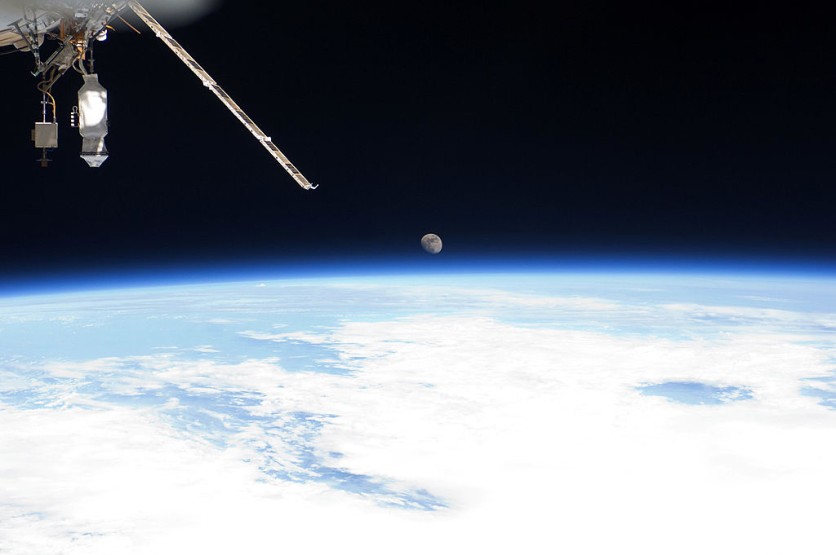IARPA has chosen four companies to provide cutting-edge tools for locating tiny space debris. The Space Debris Identification and Tracking (SINTRA) program has given four-year contracts to A-Tech, Advanced Space, SRI International, and West Virginia University Research Corporation, marking an important development in the campaign for space safety.

(Photo: NASA via Getty Images) In this handout image provided by the National Aeronautics and Space Administration (NASA), Earth's horizon and the moon can be seen from the International Space Station on July 12, 2011, in space.
Debris Dilemma
IARPA's SINTRA program intends to safeguard human spacecraft and priceless assets from the expanding amount of space junk in Earth's orbit.
When these small particles collide with satellites or other spacecraft, it can result in serious damage.
The SINTRA program aims to improve space debris-monitoring systems by focusing on miniature debris and enhancing detection, tracking, and characterization using innovative technologies and methodologies developed by selected vendors.
Currently, tracking systems focus on larger debris objects over four inches.
Read Also : SpaceX Starlink Space Debris Alarm Inmarsat; Shall We Worry About the Artificial Mega-Constellations?
Assuring Space Safety
The SINTRA program manager, Alexis Truitt, underlines the significance of comprehending the many pieces of artificial trash in Earth's orbit.
Securing space assets is essential for industries like telecommunications, navigation, weather forecasting, and national security as the use of satellite technology rises.
Given that nearly 100 million pieces are smaller than one millimeter, the SINTRA initiative focuses on locating and tracking microscopic trash objects.
We are now only able to monitor and minimize the threats associated with space debris larger than 10 cm because of limitations in the U.S. Space Surveillance Network, which the Department of Defense uses.
Developing the Technology
The SINTRA initiative intends to create solutions that get around the limits of optical sensors, tracking satellites, and ground-based radar.
The software seeks to improve situational awareness and facilitate quick decision-making in the face of possible dangers by integrating tiny trash particles.
This initiative shows a substantial step towards the ethical and sustainable use of space, going beyond space exploration and national security.
The problem of space debris becomes much more crucial as a result of the numerous mega-constellations of satellites that are scheduled for launch.
For space activities to continue operating successfully for a long time and benefit future generations, efficient tracking and management techniques are essential.
Related Article : A Space Debris From a Chinese Rocket Could Potentially Hit Earth on July 30 [UPDATE]

![Apple Watch Series 10 [GPS 42mm]](https://d.techtimes.com/en/full/453899/apple-watch-series-10-gps-42mm.jpg?w=184&h=103&f=9fb3c2ea2db928c663d1d2eadbcb3e52)



